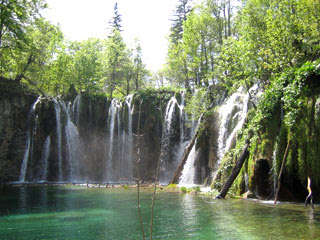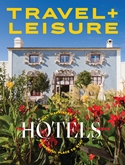
Plitvice Lakes are one of the most beautiful natural sights in Europe. In the year 1979 UNESCO has declared it with all rights as the World's natural inheritance. National Park Plitvice Lakes with total surface area of 266 km2 comprises 16 terrace-formed lakes, which are mutually connected with waterfalls and cascades. First lake lies on 636 meter altitude, while the last one, 8 km further to the South lies on 133 meters. Largest depth of the lakes is 46 meters, and natural phenomenon of Plitvice is transparency of lake water, which reaches 8 meter deep.
The Lakes are divided into two groups: Upper Lakes (12) surrounded by a huge forest are larger and more quiet while the Lower Lakes (4) lie under 70 meter high cliffs, and are surrounded by low vegetation. Plitvice Lakes were pronounced a National Park in 1949. For its beauty they are talked of as one of the most beautiful natural sights in Europe. In the year 1979 UNESCO has declared it with all rights as the World's natural inheritance. Today Plitvice are the most visited Croatian tourist destination, and the number of guests exceeds even town of Dubrovnik.
The Lakes are situated in the area where flat Croatia enters karst mountain area, and where traffic directions from the North lower towards the coastal areas of Croatia. For this reason Plitvice Lakes are an excellent place for a rest and stop on the way to sea, good lunch or even overnight stay. Distance from Zagreb is 140 km in direction of South.
Plitvice Lakes offer their visitors kilometers of arranged walking paths which in most cases means wooden bridges built over lake surface and serpentine-like connecting one shore to the other.
Since forest vegetation in warmer part of the year is extremely lush due to influence of coastal climate, and continental geographic position supplies Plitvice with plenty of snow in the winter, the National Park is well visited in all seasons of a year. Lakes There are forest areas within the Park, which, due to their virgin wood features, were proclaimed to be special reservates (e.g. Corkova uvala). There is snow on Plitvice from November to March, which is favorable for lovers of cross-country skiing. The Lakes surfaces freeze in December and January.
In the summer water temperature in the largest Lakes, Proscansko and Kozjak is around 24°C, which makes it suitable for bathing. There are altogether 20 caves in to rocks near the Lakes the famous of which are Golubinjača (Pidgeon cave), Mračnjača (Dark cave), Velika pećina (Great cave) and Šupljara (Empty cave).
You can make a tour with a tourist train and boat beside walking. Depending on your choice of visit program (there are six itineraries offered by the management of the National Park), you will need 3 to 6 hours for an organized tour. Guests who wish to stay on Plitvice can find accommodation in hotels Jezero, Plitvice, and Bellevue which are situated in narrow zone of National Park. The accommodation can, beside in hotels, also be found in private houses.
Plitvice Lakes are best known for its legendary film Winnetou based on classic work by Carl May. Original title of the film from 1960-ies, "Treasure of Silver Lake" (Der Schatz im Silbersee) is filmed on Plitvice Lakes starring actors such as Lex Barker, Herbert Lom and Pierre Brice.

